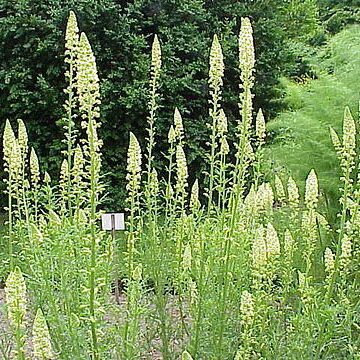Annual or perennial herbs, rarely shrubs. Leaves scattered or fasciculate, simple to pinnatipartite; stipules small, gland-like. Inflorescence terminal, spicate or racemose. Flowers hermaphrodite or rarely unisexual, usually irregular. Calyx persistent or deciduous, 4–8-partite. Petals mostly 4–7, usually unequal, small, deciduous or persistent, free or slightly coherent, laciniate, simple or clawed, often having a membranous appendage at the base of the limb. Disc usually present, often dilated on the adaxial side. Stamens 3–40, perigynous or inserted on the disc, often declinate, free or monadelphous at the base, not covered by the petals in bud; anthers 2-celled, introrse. Ovary superior, sessile or stipitate, of 2–6 free or connate carpels. Ovules 1–?, inserted on parietal placentas or at the base of the ovary. Fruit a closed or open capsule, indehiscent, rarely baccate or of as many follicles as carpels. Seeds mostly numerous, reniform or hippocrepiform, exalbuminous, with a curved embryo
Annual or perennial herbs or shrubs. Leaves alternate, herbaceous, simple, entire, crenate, lobed or pinnatisect. Inflorescence a terminal raceme, simple or branched; flowers bisexual, zygomorphic, pedicellate or subsessile in axils of bracts. Sepals usually 4–6, inserted below or rarely on disc. Petals 3–6, clawed, the posterior one largest; claw with scale-like appendage. Disc tubular or collar-shaped, surrounding and fused with filaments, excentric. Stamens 7–40, surrounding ovary, rarely crowded on anterior side of flower. Ovary superior, usually of 3 or 4 united carpels, angled, gaping, unilocular with 3 or 4 apical tooth-like stigmas; placentation parietal; ovules numerous, pendulous. Fruit a dry, gaping, thin-walled capsule. Seeds reniform; endosperm absent.
Herbs annual to perennial, rarely woody. Leaves alternate, entire to pinnatifid, with small, glandular stipules. Flowers bisexual, rarely unisexual, in terminal racemes or spikes. Sepals persistent, 4-7. Petals usually 4-7 or absent, entire or cleft, hypogynous or perigynous. Stamens 3-40, inserted on disc, exposed in bud; disc often eccentric; filaments free or connate at base; anthers 2-loculed. Carpels 2-6, free or united into a 1-loculed ovary; ovules numerous; placentation parietal or basal. Fruit a capsule or berrylike. Seeds numerous, reniform or suborbicular; endosperm almost absent; cotyledons curved.
Ovary of 2–6 free or connate carpels, closed or gaping at the top, each carpel with a separate stigma; ovules numerous on parietal placentas or at the base of the ovary
Stamens 3–40, perigynous or inserted on the disk, often declinate, free or monadelphous at the base, not covered by the petals in bud; anthers 2-thecous, introrse
Stamens 3–40, perigynous or on the disk, not covered by the petals in bud; filaments free or united at the base; anthers 2-celled, introrse
Petals small and inconspicuous or none, valvate, free or slightly coherent, often laciniate, sometimes with a scale at the base
Seeds mostly numerous, reniform or hippocrepiform, without endosperm and with a curved embryo
Flowers in terminal spikes or racemes, bisexual or rarely unisexual, usually zygomorphic
Seeds numerous, kidney-or horse-shoe-shaped; endosperm absent; embryo curved or folded
Flowers mostly zygomorphic, hermaphrodite or rarely unisexual, racemose or spicate
Fruit a closed or open capsule, rarely baccate or of as many follicles as carpels
Petals 4–7, free or slightly coherent, usually unequal, simple or laciniate
Leaves alternate or fasciculate, simple to pinnatipartite, stipules small
Leaves alternate, simple or pinnately divided; stipules small, gland-like
Ovules 1–?, inserted on parietal placentas or at the base of the ovary
Ovary superior, sessile or stipitate, of 2–6 free or connate carpels
Galyx persistent, mostly zygomorphic, 4–7-lobed, imbricate
Annual or perennial herbs with watery juice, rarely woody
Disk usually present, often dilated on the adaxial side
Disk present, often dilated on the adaxial side
Calyx persistent or deciduous, 4–8-partite
Annual or perennial herbs, rarely shrubs
Fruit a gaping capsule or baccate

